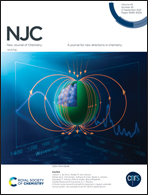A porous diatomite ceramic separator for lithium ion batteries†
Abstract
A lithium silicate ceramic separator with a porous structure is obtained by the reaction of diatomite with lithium hydroxide. The ceramic separator has excellent thermal stability, a unique three-dimensional porous structure and an active Li2Si2O5 component in the inorganic matrix. The calcination temperature during the preparation process can affect the porosity, electrolyte uptake rate, mechanical properties and the component of the ceramic separator. The increase of calcination temperature promotes the formation of crystalline Li2Si2O5 in the ceramic separator, and Li2Si2O5 with ion conduction characteristics plays a role like a solid electrolyte. The migration of Li+ in the ceramic separator can be carried out in the pores of the separator and the separator matrix with ion-conducting activity, which significantly increases the ionic conductivity of the separator. The ceramic separator prepared at 800 °C (DCS800) has an ionic conductivity of 1.63 mS cm−1, and its porosity and electrolyte wettability are obviously higher than those of the commercial PP separator. The Li/LiFePO4 cell with a DCS800 separator still has a discharge specific capacity of 82 mA h g−1 at 10C, which is 38.5% higher than that of a battery assembled with a commercial Celgard 2400 separator. Moreover, the capacity retention rate of the battery with a DCS800 separator after 200 cycles at 0.5C is 97.8% and its Coulomb efficiency remains at 99.4%.



 Please wait while we load your content...
Please wait while we load your content...